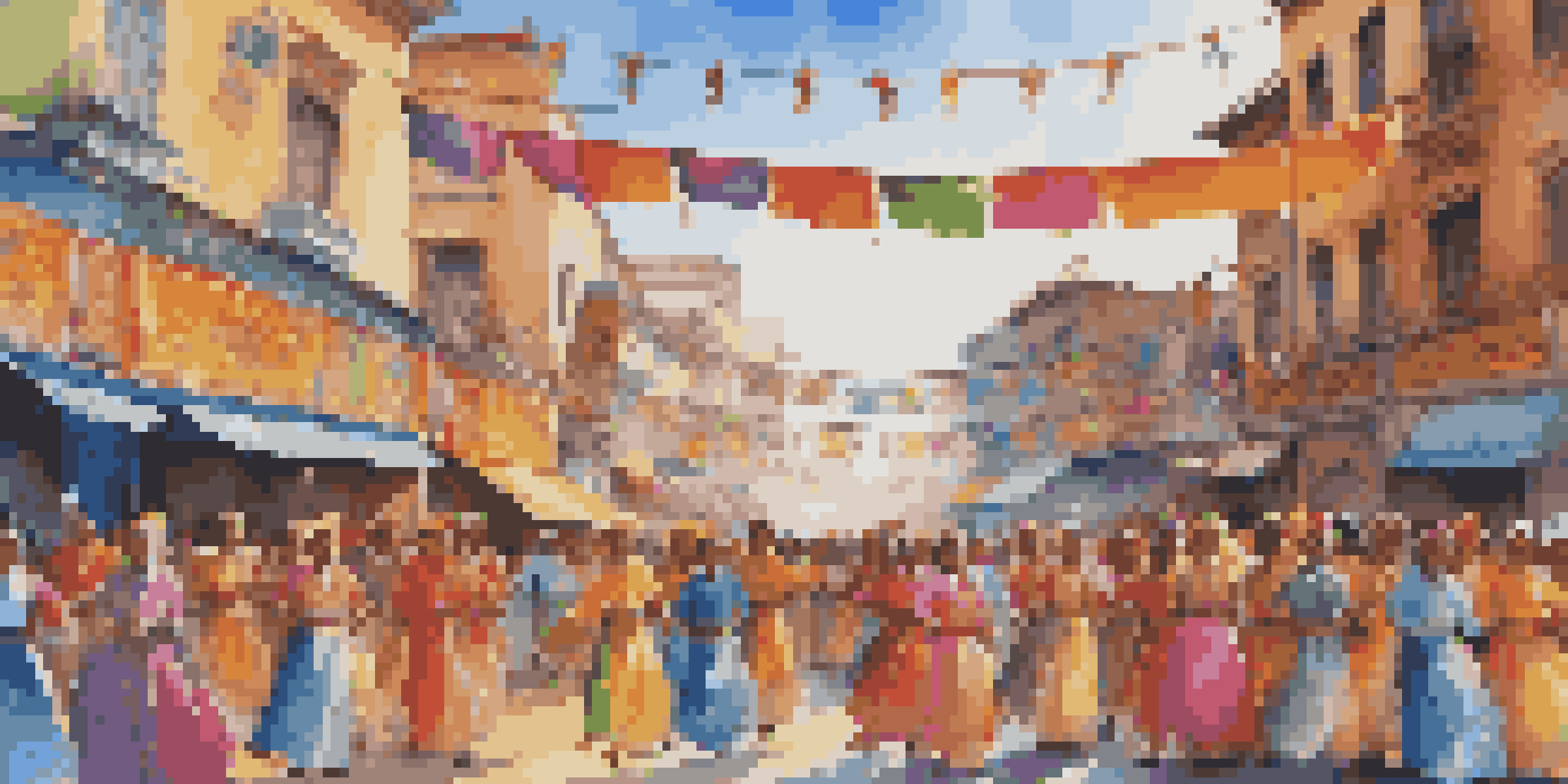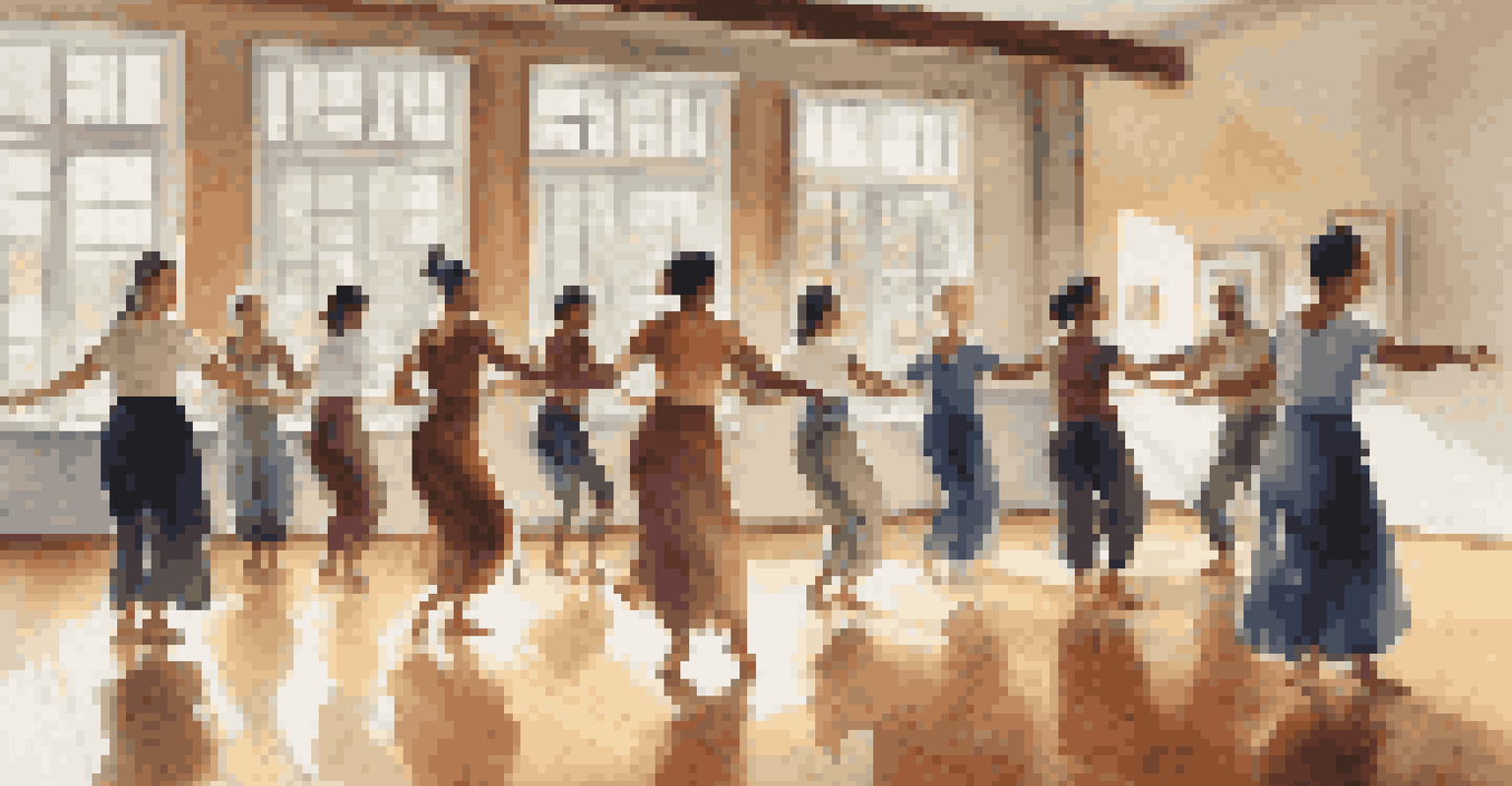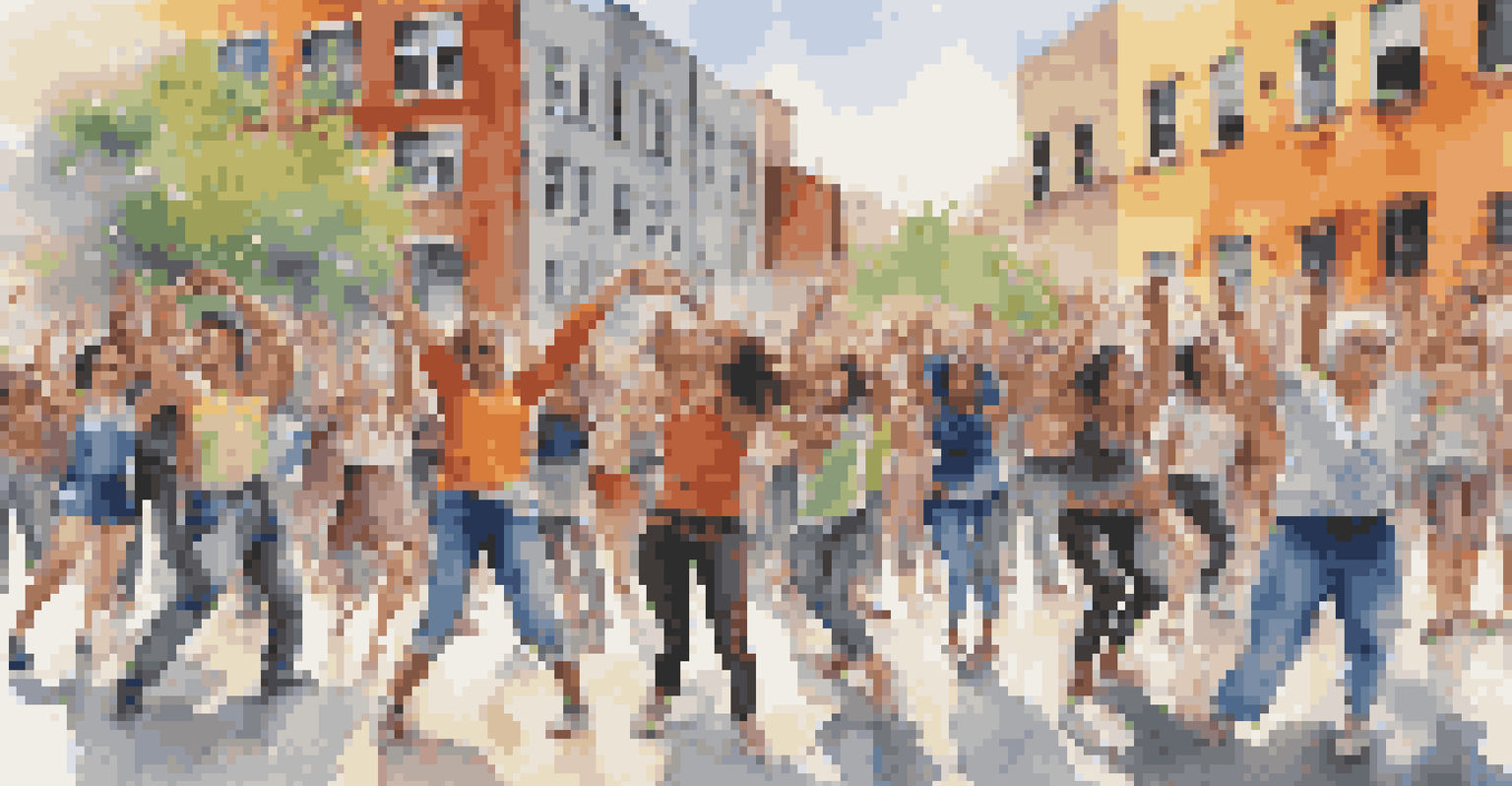Celebrating Diversity through Dance: The Sound of Unity

Understanding Dance as a Universal Language
Dance transcends barriers, speaking a language that everyone can understand. Whether it’s the graceful movements of ballet or the rhythmic beats of hip-hop, each style tells a story. This universality makes dance an ideal medium for expressing cultural identities and shared experiences.
Dance is the hidden language of the soul.
Imagine attending a festival where dancers from all over the world showcase their traditional styles. Each performance, while unique, resonates with a common thread of emotion and expression that audiences can feel, regardless of their background. This shared experience fosters understanding and appreciation among diverse groups.
As we embrace the idea that dance connects us, we begin to realize its potential to bridge cultural divides. It encourages dialogue, promotes empathy, and builds relationships, reminding us that despite our differences, we can find common ground through movement.
The Role of Dance in Cultural Identity
Dance is often a reflection of cultural heritage, encapsulating the history and traditions of a community. From the vibrant samba of Brazil to the elegant waltz of Austria, each dance form carries the essence of its roots. This cultural significance makes dance an important medium for preserving traditions.

For many, engaging in traditional dances is a way to honor their ancestry and transmit values to future generations. Families gather to celebrate milestones, passing down techniques and stories that enrich their cultural fabric. These practices not only strengthen identity but also promote a sense of belonging.
Dance Unites Cultures and Emotions
Dance serves as a universal language that transcends cultural barriers, fostering understanding and empathy among diverse groups.
Moreover, as cultures evolve, so does their dance. Contemporary interpretations of traditional dances highlight how culture can adapt while still honoring its origins. This dynamic interplay showcases the resilience of cultural identity and the beauty of diversity.
Dance Festivals: A Celebration of Diversity
Dance festivals serve as vibrant platforms for celebrating the diversity of movement. These events bring together artists from various cultural backgrounds, allowing them to share their unique styles and stories. The result is an electrifying fusion of rhythm, color, and energy that showcases the beauty of our differences.
Dance is the joy of movement and the heart of life.
Imagine a street filled with performers from around the globe, each displaying their cultural dance. Spectators get to experience everything from African tribal dances to Indian classical forms, all in one place. This immersive experience not only entertains but educates audiences about the richness of world cultures.
Such festivals also encourage collaboration among artists, leading to innovative performances that blend different dance styles. This creative exchange fosters unity and highlights the importance of recognizing and celebrating diversity in the arts.
Dance as a Tool for Social Change
Beyond entertainment, dance can be a powerful catalyst for social change. Many artists use their craft to raise awareness about social issues, using movement as a means to convey messages about equality, justice, and unity. This ability to inspire action makes dance a vital tool in advocacy.
For instance, flash mobs have emerged as a trendy way to draw attention to important causes, combining surprise and performance art to engage the public. These spontaneous dances can spark conversations and encourage community involvement in social movements. They remind us that we can leverage creativity to make a difference.
Cultural Identity Through Dance
Dance reflects cultural heritage, preserving traditions while allowing for contemporary interpretations that celebrate diversity.
Furthermore, dance therapy has proven effective in promoting mental health and healing. By expressing emotions through movement, individuals can work through trauma and build resilience, fostering a more inclusive society where everyone feels supported.
The Impact of Technology on Dance and Diversity
In today’s digital age, technology plays a significant role in how we experience and share dance. Social media platforms allow dancers to showcase their talents globally, breaking down geographical barriers. This online exposure fosters a diverse dance community that thrives on collaboration and innovation.
Virtual dance classes and workshops have become increasingly popular, making it easier for people from different backgrounds to learn various dance styles. This accessibility promotes inclusivity and encourages individuals to step outside their comfort zones and explore new forms of expression.
Additionally, technology enables the documentation of diverse dance forms, preserving them for future generations. By capturing these movements, we create a living archive that honors the richness of cultural heritage and ensures that these traditions continue to thrive.
Dance Education: Fostering Inclusivity
Dance education plays a crucial role in promoting inclusivity and appreciation for diverse cultures. By exposing students to various dance styles, educators can help them understand the cultural significance behind each movement. This knowledge fosters respect and admiration for different traditions.
Incorporating multicultural dance forms into the curriculum allows students to explore history, geography, and art through movement. They learn not only about the dances themselves but also the stories and values that each style represents. This holistic approach to education encourages empathy and understanding.
Dance as a Catalyst for Change
Through performance and movement, dance can raise awareness about social issues and promote healing, making it a powerful tool for social change.
Moreover, dance programs that prioritize inclusivity create safe spaces for individuals of all backgrounds. They provide opportunities for self-expression and creativity, ensuring that everyone feels valued and celebrated in their unique identities.
The Future of Dance and Unity
As we look to the future, the role of dance in promoting unity and diversity will undoubtedly evolve. With global challenges ahead, the need for connection and understanding among cultures has never been more critical. Dance will continue to serve as a powerful medium for bringing people together and fostering cooperation.
Emerging trends, such as cross-cultural collaborations, will further enrich the dance landscape. Artists from different backgrounds will increasingly come together to create new forms of expression, resulting in innovative performances that celebrate diversity while cultivating unity.

Ultimately, the future of dance lies in its ability to adapt and resonate with the changing world. By embracing its potential as a force for good, we can continue to use dance to bridge divides, celebrate diversity, and create a harmonious global community.